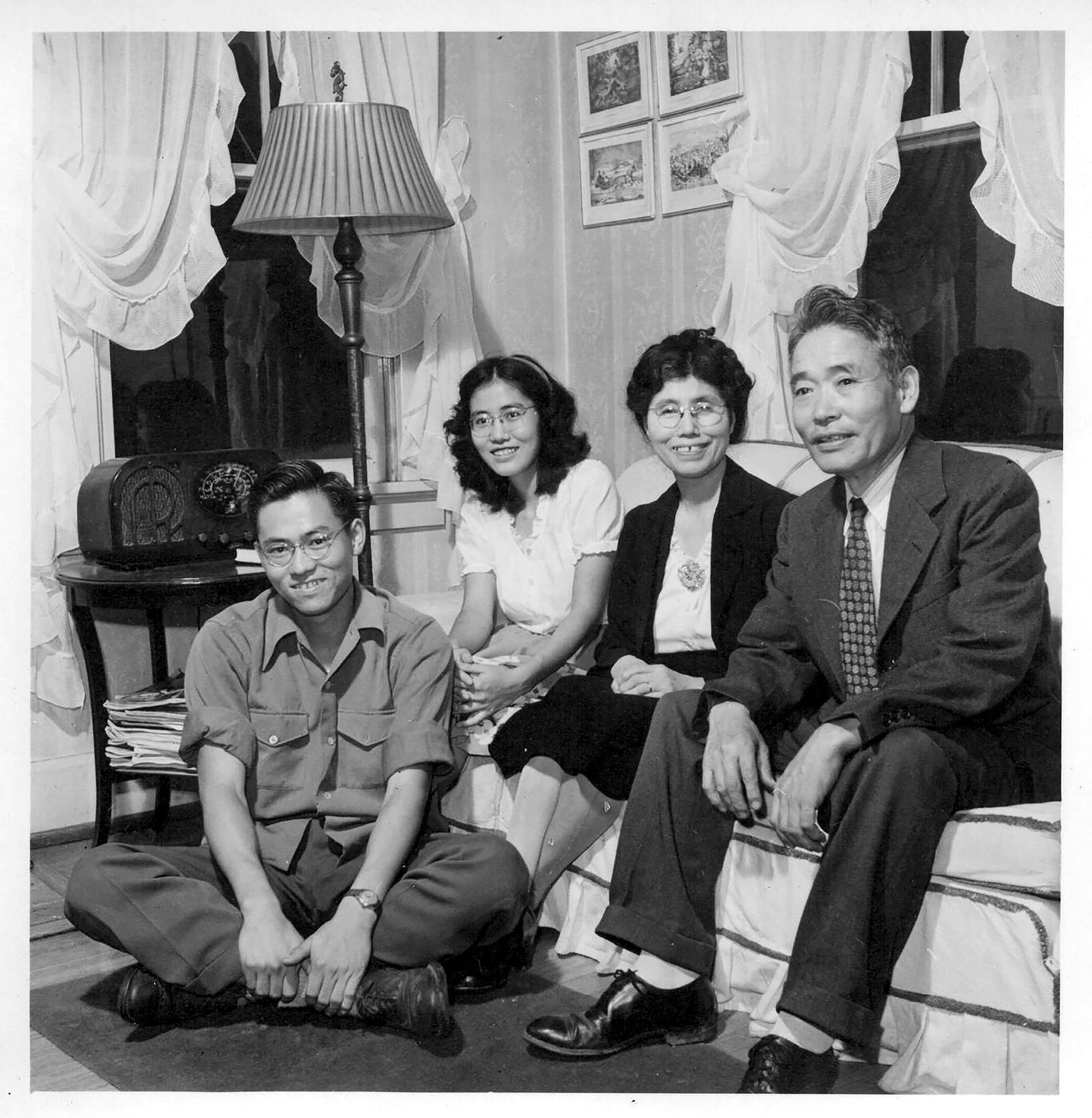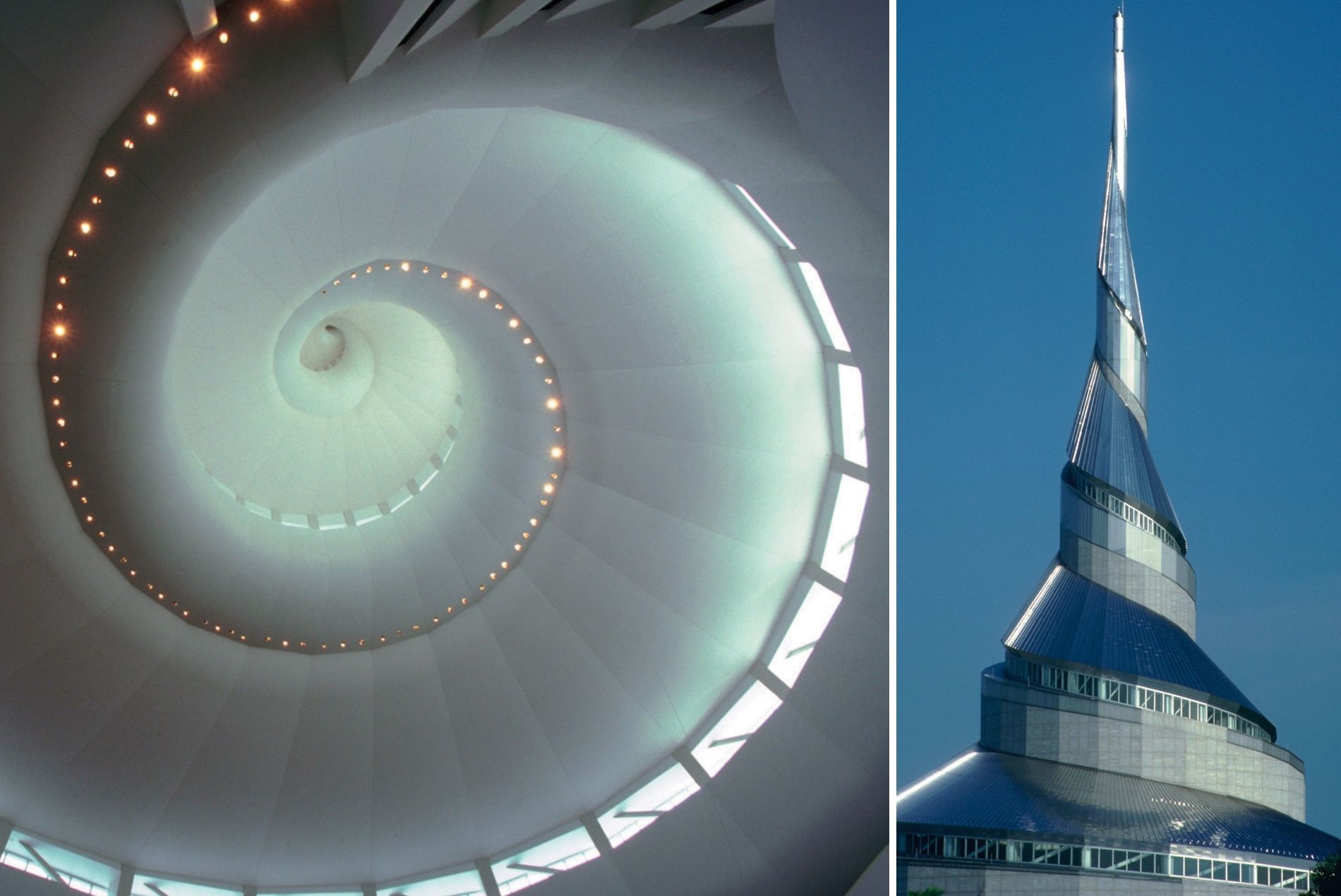Gyo Obata, FAIA, architect and Founding Partner of HOK, passed away on March 8. He was 99.
Obata, in partnership with George F. Hellmuth and George Kassabaum, built HOK from a regional, St. Louis-based architectural practice into a global design, architecture, engineering, and planning firm.
His career spanned six decades and included numerous iconic projects, including:
- Priory Chapel at Saint Louis Abbey, Creve Coeur, Mo. (1962)
- The Galleria in Houston (1970)
- Dallas/Fort Worth International Airport (1973)
- Bristol-Myers Squibb Campus, Princeton, N.J.(1973)
- National Air and Space Museum in Washington, D.C. (1976)
- King Khalid International Airport in Riyadh, Saudi Arabia (1983)
- King Saud University in Riyadh (1984)
- Community of Christ Temple, Independence, Mo. (1994)
- Japanese American National Museum Pavilion in Los Angeles (1998)
Statement from HOK:
Gyo was one of three principals who built HOK from a regional, St. Louis-based architectural practice into one of the world’s most respected global design, architecture, engineering and planning firms. His distinguished career spanned six decades. From the time of his retirement in 2012 and continuing into 2018, Gyo maintained an office in HOK’s St. Louis studio, where he regularly served as a design advisor to his colleagues.
“Gyo’s extraordinary career at HOK continued into his 90s, and he served as a mentor to several generations of designers including myself,” said HOK Chairman and CEO Bill Hellmuth, FAIA. “As an example to all of us, he led HOK to become the largest architecture-engineering firm in the United States while never abdicating his role as a designer of significant projects.”
Underpinning Gyo’s pioneering design approach was a fundamental belief that each project must be approached without preconceptions and designed to serve the needs, values and aspirations of the people and community it serves. Rather than imposing his will upon a project, Gyo paid close attention to the needs expressed by clients and then let the project guide the design of a building that would bring meaning and enjoyment to its visitors and inhabitants.

“Gyo embodied everything that’s honorable about the architectural profession,” said Bill Valentine, FAIA, HOK’s chairman emeritus. “Instead of designing for the fashions of the times or to make a personal statement, Gyo designed to improve lives. He was a kind, thoughtful man who developed warm, personal relationships with his colleagues and clients. People believed in him, which is an essential part of turning drawings into buildings.”
A strong proponent of sustainable design, Gyo’s work is characterized by an efficient use of materials and sense of harmony with its natural environment. “If you see architecture as a conversation with the surrounding environment, then Gyo is the ideal conversationalist,” wrote George McCue in a 1983 cover story on Gyo for St. Louis Magazine. “The greatest virtue his buildings possess is the great ‘courtesy’ they display toward their environment.”
Gyo was an advocate for a holistic approach to design in which architecture, engineering, interior design, planning and landscape architecture are fully integrated and delivered by a single multidisciplinary design team. This approach helped drive HOK’s ongoing expansion into new specialty practices, market sectors and geographic regions.
During his 50-year tenure as HOK’s design principal, Gyo shaped iconic, award-winning projects around the world. A few noteworthy examples include the Priory Chapel at Saint Louis Abbey, Creve Coeur, Missouri (1962); The Galleria in Houston (1970); Dallas/Fort Worth International Airport (1973); Bristol-Myers Squibb Campus, Princeton, New Jersey (1973); National Air and Space Museum in Washington, D.C. (1976); King Khalid International Airport in Riyadh, Saudi Arabia (1983); King Saud University in Riyadh, Saudi Arabia (1984); Community of Christ Temple, Independence, Missouri (1994); and the Japanese American National Museum Pavilion in Los Angeles (1998).

With an approach to life that regarded each day as a portal to possibility, Gyo also loved spending time with his family and friends, gardening, tennis, art, travel, reading, his dogs, birds, music, theater, opera, films and cooking.
Gyo Obata's Life of Design
Gyo was born in San Francisco in 1923. His parents, both artists from Japan, met in San Francisco after emigrating to the U.S. His father, Chiura Obata, introduced the classical sumi-e style of painting to the U.S. West Coast, and his mother, Haruko Obata, did the same for ikebana, the Japanese art of flower arranging. “Our house was like a studio, and was always filled with paintings and flowers,” said Gyo in the 2010 book by Marlene Ann Birkman: Gyo Obata: Architect | Clients | Reflections. “My parents were both great teachers and taught me life’s most basic lesson: to listen very carefully.”
Gyo was 18 when the Japanese attacked Pearl Harbor and an anti-Japanese hysteria swept the United States. He enrolled in the architectural program at the University of California, Berkeley in 1942, but his education was interrupted during his freshman year by the internment of approximately 117,000 people of Japanese ancestry in the U.S. The night before his parents, brother and sister were relocated to an internment camp in Northern California, Gyo boarded a train to St. Louis to continue his architectural training at Washington University, which at the time was one of the only U.S. universities that would accept Japanese-American students. His father had secured special permission from the local provost marshal for him to leave the region.

He earned a Bachelor of Science in Architecture from Washington University in 1945 before continuing his architectural education at Cranbrook Academy of Art in Michigan. There he studied under master Finnish architect Eliel Saarinen, the father of Eero Saarinen, architect of the iconic Gateway Arch in St. Louis. In 1946, Gyo received a Master of Architecture and Urban Design.
“Saarinen’s teachings had an enormous positive influence on me,” said Gyo in a 2006 interview. “He emphasized the relationship of every element in a design and the importance of integrating them, from the smallest through the largest. Since then, I have always been interested in working on large-scale projects where many smaller parts must fit within the greater whole.”
After serving with the U.S. Army in the Aleutian Islands off the coast of Alaska, Gyo joined the Chicago office of architecture firm Skidmore, Owings & Merrill in 1947 as a designer.

In 1951, the St. Louis architecture firm Hellmuth, Yamasaki & Leinweber (HYL) recruited him as a design assistant to Minoru Yamasaki, an architect who would later design the World Trade Center in New York City. Gyo’s collaborations with Yamasaki included the design of the signature passenger terminal at St. Louis Lambert International Airport that opened in 1956. Credited for helping change the visual vocabulary of airports and being the forerunner of modern airport terminals, the building features aerodynamic lines and a series of low-slung arches that celebrate the concept of flight.
When HYL reorganized in 1955 as Hellmuth, Obata & Kassabaum (HOK), Gyo, at the age of 32, was appointed principal of design. Together with George Hellmuth (1907-1999), who led marketing and business development, and George Kassabaum (1921-1982), who oversaw production, the partners pioneered a tripartite business model that would come to define the modern multidisciplinary architecture practice.
Related Stories
| Aug 11, 2010
Goettsch Partners wins design competition for Soochow Securities HQ in China
Goettsch Partners (GP) has been selected as the winning firm in the competition to design the Soochow Securities Headquarters, the new office and stock exchange building for Soochow Securities Co. Ltd. The 21-story, 441,300-square-foot project includes 344,400 square feet of office space, an 86,100-square-foot stock exchange, meeting rooms, classrooms, a cafeteria, and underground parking for 400 cars and 800 bicycles.
| Aug 11, 2010
RMJM unveils design details for $1B green development in Turkey
International architecture company RMJM today announced details of the $1 billion Varyap Meridian development it is designing in Istanbul’s new residential and business district, which will be one of the "greenest" projects in Turkey. The luxury 372,000-square-meter development on a site totalling 107,000 square meters will be located in the Atasehir district of Istanbul, which the Turkish government intends to transform into the country’s new financial district and business center.
| Aug 11, 2010
Urban Land Institute honors five 'outstanding' developments in Europe, Middle East, and Africa
Five outstanding developments have been selected as winners of the Urban Land Institute (ULI) 2009 Awards for Excellence: Europe, Middle East, and Africa (EMEA) competition. This year, the competition also included the announcement of two special award winners. The Awards for Excellence competition is widely regarded as the land use industry’s most prestigious recognition program.
| Aug 11, 2010
Design firms slash IT spending in 2009
Over half of architecture, engineering, and environmental consulting firms (55%) are budgeting less for information technology in 2009 than they did in 2008, according to a new report from ZweigWhite. The 2009 Information Technology Survey reports that firms' 2009 IT budgets are a median of 3.3% of net service revenue, down from 3.6% in 2008. Firms planning to decrease spending are expected to do so by a median of 20%.
| Aug 11, 2010
A glimmer of hope amid grim news as construction employment falls in most states, metro areas
The construction employment picture brightened slightly with 18 states adding construction jobs from April to May according to a new analysis of data released today by the Bureau of Labor Statistics (BLS). However, construction employment overall continued to decline, noted Ken Simonson, the chief economist for the Associated General Contractors of America.
| Aug 11, 2010
Thom Mayne unveils 'floating cube' design for the Perot Museum of Nature and Science in Dallas
Calling it a “living educational tool featuring architecture inspired by nature and science,” Pritzker Prize Laureate Thom Mayne and leaders from the Museum of Nature & Science unveiled the schematic designs and building model for the Perot Museum of Nature & Science at Victory Park. Groundbreaking on the approximately $185 million project will be held later this fall, and the Museum is expected to open by early 2013.
| Aug 11, 2010
SOM's William F. Baker awarded Fritz Leonhardt Prize for achievement in structural engineering
In recognition of his engineering accomplishments, which include many of the tallest skyscrapers of our time, William F. Baker received the coveted Fritz Leonhardt Prize in Stuttgart, Germany. He is the first American to receive the prize.
| Aug 11, 2010
American Concrete Institute forms technical committee on BIM for concrete structures
The American Concrete Institute (ACI) announces the formation of a new technical committee on Building Information Modeling (BIM) of Concrete Structures.







